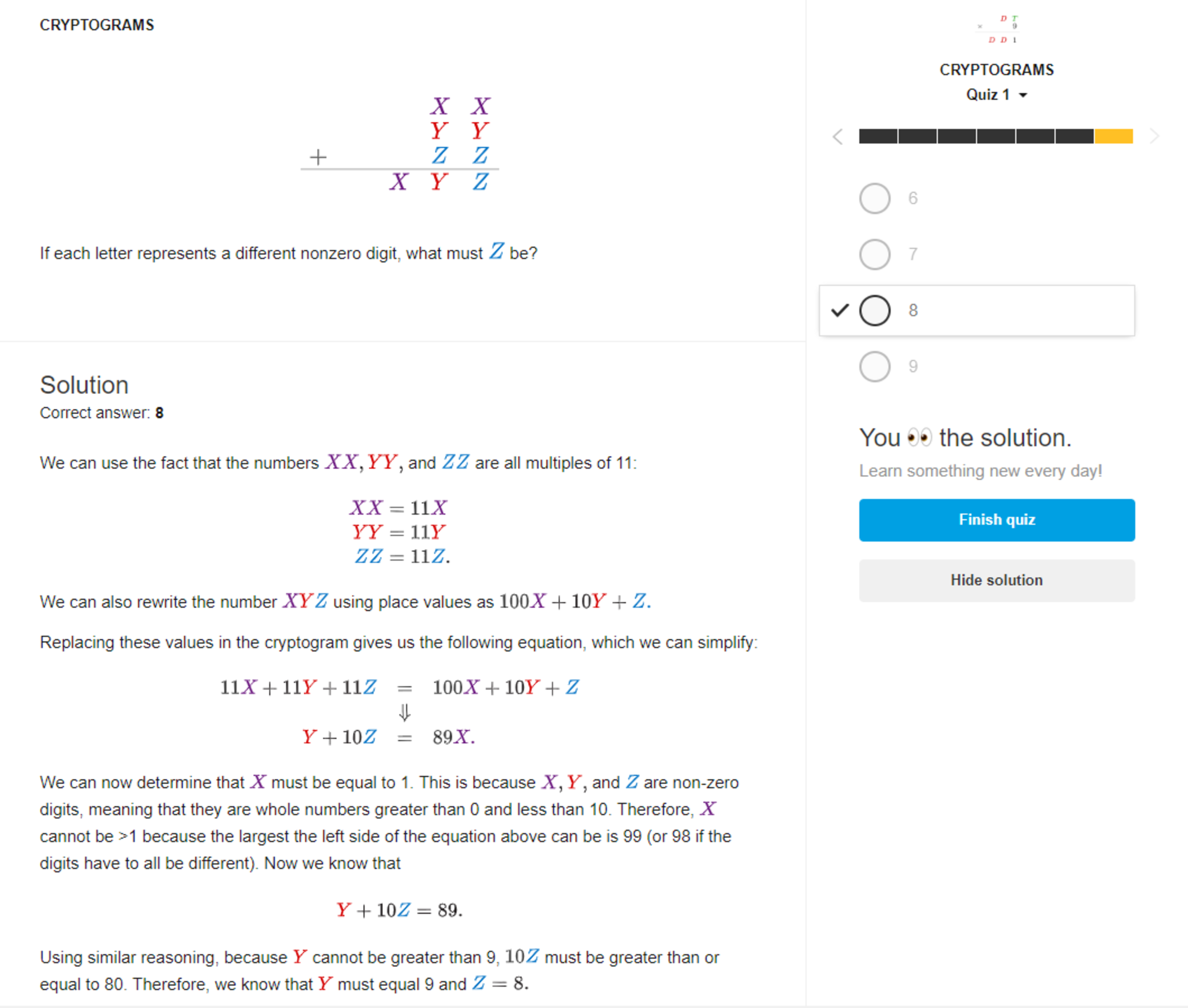Cryptograms Problem
https://brilliant.org/practice/cryptograms-2/?p=7

How did we know that X must be equal to 1?
No vote yet
1 vote
https://brilliant.org/practice/cryptograms-2/?p=7

How did we know that X must be equal to 1?
Easy Math Editor
This discussion board is a place to discuss our Daily Challenges and the math and science related to those challenges. Explanations are more than just a solution — they should explain the steps and thinking strategies that you used to obtain the solution. Comments should further the discussion of math and science.
When posting on Brilliant:
*italics*or_italics_**bold**or__bold__paragraph 1
paragraph 2
[example link](https://brilliant.org)> This is a quote# I indented these lines # 4 spaces, and now they show # up as a code block. print "hello world"\(...\)or\[...\]to ensure proper formatting.2 \times 32^{34}a_{i-1}\frac{2}{3}\sqrt{2}\sum_{i=1}^3\sin \theta\boxed{123}Comments
If X is any number greater than 2, suppose let's say X=2 then we will get it as : Y+10Z=89×2=178 But it is given that X<Y,Z are no-zero digit that means they lie between (0,10). So, the maximum value of Y=9 or Y=8 (as it is given that all are distinct numbers) and the maximum value of 10Z=10×9=90. Now : max(Y+10Z)=8+90=98(or)9+90=99 If X=2 we will get Y+10Z=178 but the maximum value of Y+10Z=98 (or) 99 and hence there will be a contradiction. So, X must be equal to 1.
Log in to reply
It helped, Thank You! :)